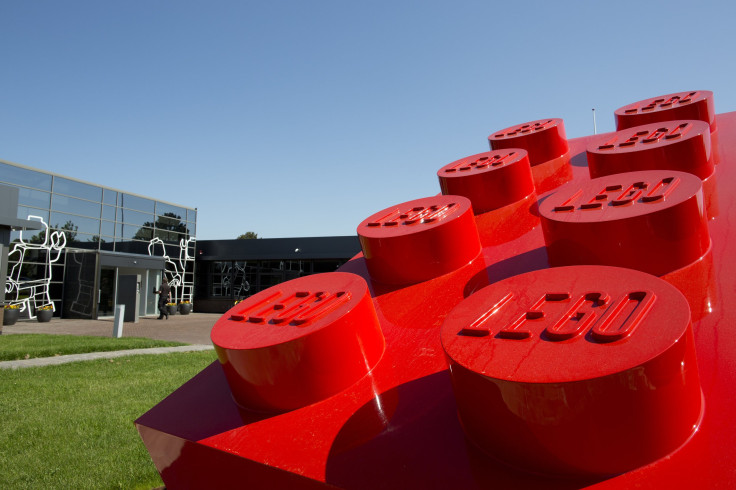Lego Prices May Cause Sticker Shock, But The Toy Blocks Will Always Stick Together

Lego may be the world’s biggest toymaker, but it didn't get there by keeping its prices down.
“I went to Toys 'R' Us recently to buy my son a Lego set for Hanukkah. Did you know a small box of Legos costs $60? Sixty bucks for 102 plastic blocks!” NPR’s Chana Joffe-Walt wrote in a 2012 article.
A quick Google search reveals that Lego products can be bought for a few dollars to more than $200 depending on the set. For instance, a Lego Minifigure, a plastic figure that measures just an inch and a half tall, costs about $4. The popular Millennium Falcon with 1,254 pieces goes for $179.99. In comparison, competitor Mega Bloks sells the competing “Halo” set with 1,161 pieces at retail for $68.
While Lego would not comment on how its products are priced – which it says is set by the retailer (never mind the wholesale price the retailer pays) -- a company spokesperson said the bricks are made with extreme precision, resulting in a higher-quality product. Still, Lego blocks are made from plastic, and their patents expired in 1989. If any toy company can make the bricks, then why do consumers repeatedly choose Lego?
“Lego spends a lot of attention on ‘clutch power,’” David Robertson, author of the book "Brick by Brick," told NPR. The term he invented refers to how every Lego brick fits perfectly with another, regardless if it was manufactured in 1968 or 2008.
The privately held, family-owned Lego Group has factories in its native Denmark, Hungary, the Czech Republic, Mexico and soon in China. No matter where or when the pieces are built, “the main thing is the bricks are the same,” Charlotte Simonsen, head of corporate communications at Lego, told International Business Times. Regardless of what set they belong to or when they were made, they will always fit together.
While Lego dominated the construction toy market for decades, Mega Bloks emerged as a competitor in the last decade.
The construction toy block company, which was recently purchased by major toymaker Mattel (NASDAQ:MAT), makes bricks that look like Legos, can snap onto Legos, and are often a fraction of the cost. Still, Lego sales show most consumers opt for the pricier Danish product over the Canadian knockoff.
Dallas Slieker, a 30-year-old Lego fan, says his decision to buy Lego is rooted in quality.
“Other brands like Mega Bloks have greatly improved in the last five years regarding their quality, but still some parts don’t fit together perfectly, which is a distraction from the creative process,” he told International Business Times.
Lego is painstakingly precise when it comes to their production. Each block has three numbers inscribed on it which determines what mold it was made in and its placement in that mold. If a defect is found, the company can pinpoint exactly which mold is defective and correct the issue, Robertson explained. Defects are extremely rare. Just 18 out of every 1 million Lego elements produced are considered defective, according to BusinessWeek.
While the company may purchase new licenses for the Disney Princess, the film “the Hobbit” or “The Simpsons” -- to name a few acquired this year-- that may bring more children to their brand, it’s the most basic details that keep customers coming back.
“I trust Lego parts to have consistent colors, even over several years,” Slieker said. “Other companies have different colors, even in the same set. Mega Bloks does some ‘swirly’ patterns that never match up.”
Lego’s longevity also plays a part in the mind of the consumer, Amy Shea, executive vice president at the research consultancy Brand Keys, told Daily Finance.
"The ultimate question comes down to, how would I feel about giving my grandson fake Legos? I wouldn't do it. Even if I thought they wouldn't know the difference, I would know the difference. The knockoffs just don't have that emotional meaning."
But Lego wasn’t always the toy brand parents opted for. In the early 2000s it struggled with sales, after venturing into other businesses and losing focus on its hallmark design. Lego's executive vice-president for markets and products, Mads Nipper, said, "With our arrogance, we thought being Lego allowed us to do anything."
Nipper told Bloomberg BusinessWeek the company gave product designers free rein, which resulted in complex models that made supply costs soar. The Lego City product, which once accounted for 13 percent of the company’s total revenue, plummeted to just 3 percent during that time.
"Management was to blame," Nipper said. "The same people who were doing crappy products then are making world-class products today."
By 2010, the company returned to its roots thanks to a restructuring effort led by the grandson of Lego’s founder. Sales rose more than one-third to a record $3 billion, with net profits $700 million. Today, the company is the world’s largest toymaker. It has made more than $2 billion in the first half of 2014 alone – up more than 11 percent from the year before -- partially due to the 2014 release of the “Lego Movie," which some saw as an ad for the iconic toys. The blockbuster made $257 million at the box office, and Lego shared in some of that wealth.
© Copyright IBTimes 2024. All rights reserved.





















